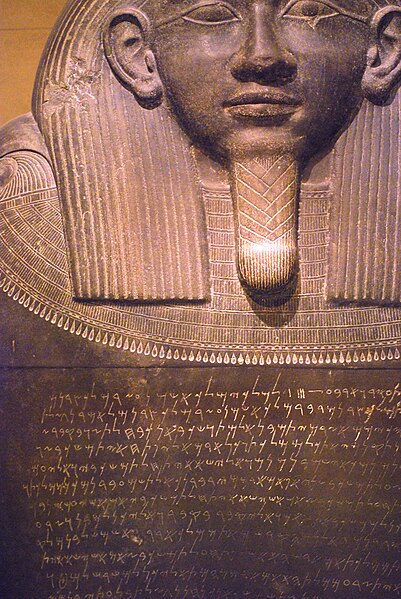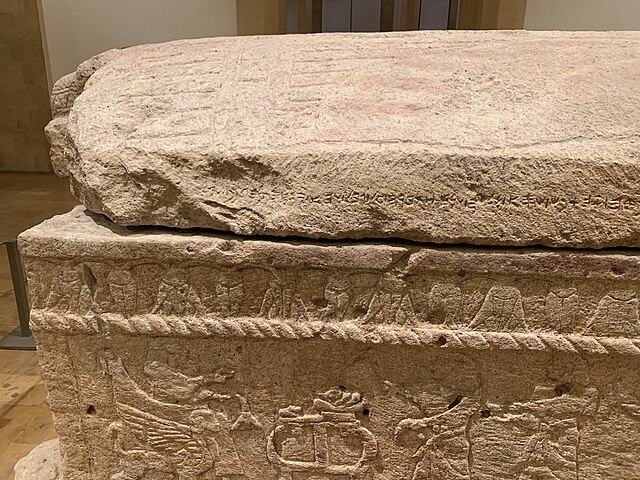Old Aramaic refers to the earliest stage of the Aramaic language, known from the Aramaic inscriptions discovered since the 19th century.
Silver ingot of Bar-Rakib, son of Panammuwa II, King of Sam‘al (now called Zincirli Höyük).
The 4th century BC Letoon trilingual uses Greek, Lycian and Aramaic. Fethiye Museum.
Bilingual inscription (Greek and Aramaic) by Ashoka, third century BCE at Kandahar, Afghanistan
Mandaic magical "demon trap"
Canaanite and Aramaic inscriptions
The Canaanite and Aramaic inscriptions, also known as Northwest Semitic inscriptions, are the primary extra-Biblical source for understanding of the society and history of the ancient Phoenicians, Hebrews and Arameans. Semitic inscriptions may occur on stone slabs, pottery ostraca, ornaments, and range from simple names to full texts.
The older inscriptions form a Canaanite–Aramaic dialect continuum, exemplified by writings which scholars have struggled to fit into either category, such as the Stele of Zakkur and the Deir Alla Inscription.
The Sarcophagus of Eshmunazar II was the first of this type of inscription found anywhere in the Levant (modern Jordan, Palestine, Israel, Lebanon and Syria).
Phoenician alphabet
Aramaic alphabet
Image: National Museum of Beirut – Ahiram sarcophagus inscription 1








